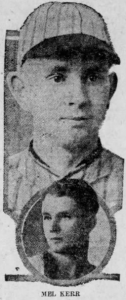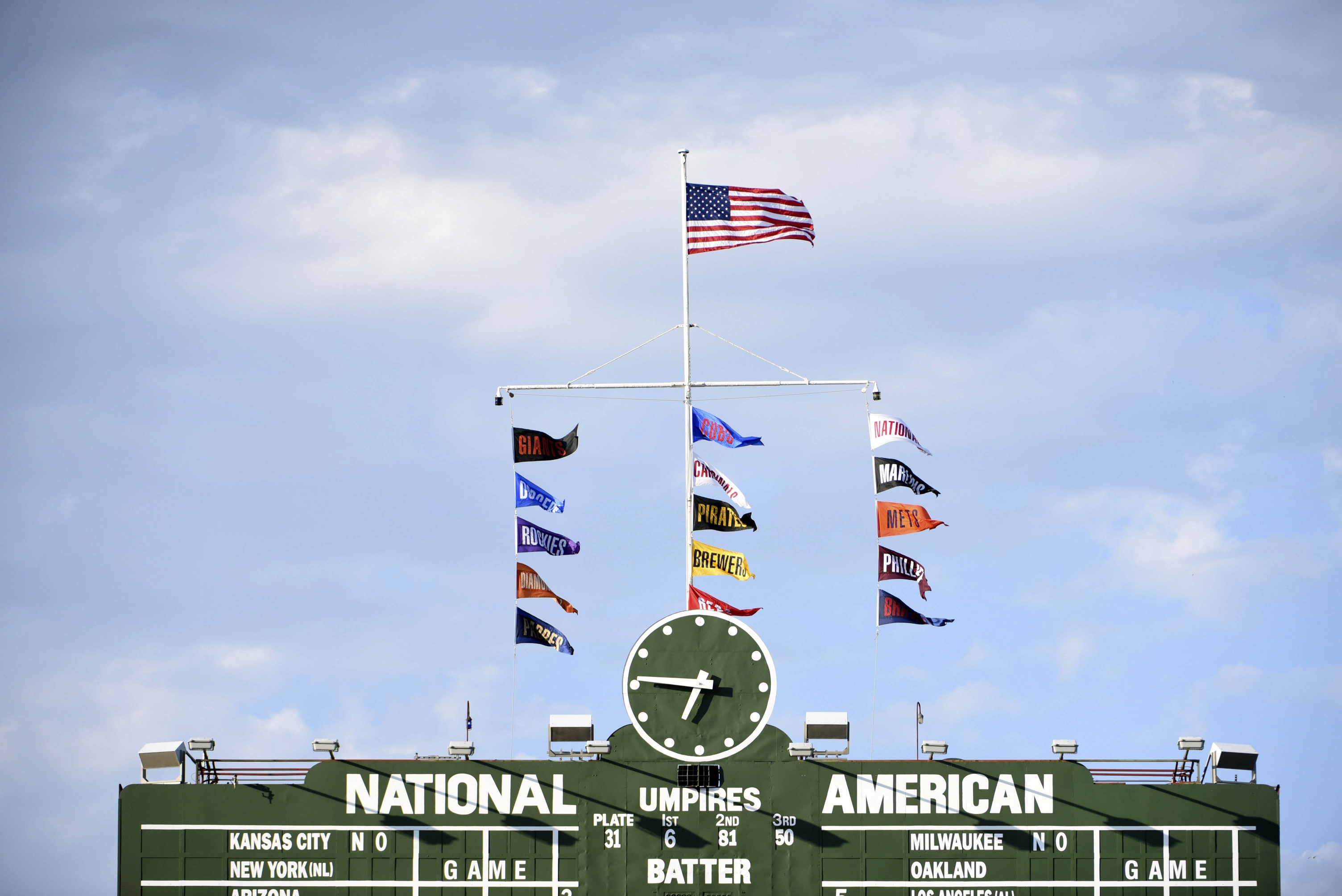Though baseball is often described in poetic terms, and rightly so, there is another more hurried, cutthroat element to the sport in which players are treated as products who can be bought and sold at will. Though this remains a problem in today’s MLB, it was at its most stark in the 1920s, when teams were hurrying to acquire larger and larger audiences, partially by developing the farm system. As a whole, the 1920s was a time of great innovation and expansion; mass consumerism enabled companies to rapidly develop large customer bases that fed the creation of international markets and the beginning of a global economy. With respect to baseball, the invention of the radio as well as the creation of farm systems expanded each team’s reach. But it also meant certain players got lost in the shuffle. Mel Kerr, a remarkable athletic specimen who tried to make a career with the Cubs, was one such person.
The Cubs of the early 1920s were not particularly successful, repeatedly finishing in the bottom half of the standings, but that did not dissuade fans. Indeed, with the construction of the larger Wrigley Field, the team received an increase in attendance, and Wrigley and Veeck revamped the team’s image to portray baseball as a wholesome event that could—and should—be enjoyed by the entire family. Though attendance steadily increased from 1923 to 1930, the play on the field declined, save for the pennant-winning 1929 team. Wrigley and Veeck revolutionized the ballpark experience and introduced inventive advertising schemes, but their player development techniques lagged behind the rest of the league.
In the early part of the decade, several years before Branch Rickey developed the formal and more complex farm system in place today, teams employed several professional scouts to evaluate players on nearby minor league teams and negotiate the sale of acceptable players to the major league team. To circumvent the 40-man roster constraint that limited the team to control over just 15 minor league level players, many teams bought minor league teams so they could stash players there to be used as assets in sales and trades. However, Wrigley staunchly believed minor league teams could flourish only if they were free to develop their own players and sell them to the highest-bidding major league teams, and so he refused participation in this system until abstention became overtly detrimental to the Cubs.1 Instead, the Cubs relied on the talents of one particular scout, Jack Doyle, whose genius lay in snagging underappreciated players from teams who sold them for miniscule profits. It was this method that gained the Cubs Hack Wilson, Gabby Hartnett, and Billy Herman, among others.2
Veeck also relied on a broad network of connections to learn about obscure players unlikely to be scouted by any other team. Kerr was one of these players. Mel Kerr of Manitoba was a sporting hero in Western Canada, “one of the most versatile athletes ever developed.”3 In the Saskatoon Senior Amateur B aseball League in 1924, Kerr outhit his peers by 100 points, finishing with a .435 average. He was insanely athletic, displaying great speed and awareness in the outfield and on the bases. In addition to baseball, Kerr excelled at basketball, tennis, track and field, swimming, and football, and was chosen as a member of the 1924 Olympic team, but declined in order to work toward a baseball career. He aspired to play professional baseball in the summer and professional basketball in the winter.4
aseball League in 1924, Kerr outhit his peers by 100 points, finishing with a .435 average. He was insanely athletic, displaying great speed and awareness in the outfield and on the bases. In addition to baseball, Kerr excelled at basketball, tennis, track and field, swimming, and football, and was chosen as a member of the 1924 Olympic team, but declined in order to work toward a baseball career. He aspired to play professional baseball in the summer and professional basketball in the winter.4
Although baseball in Canada had grown at about the same rate as it had in America, the country had yet to produce any stars, and the few Canadians who made it to the major leagues (three from 1920-1924) came from Ontario and despite having played against Americans for most of their careers, the longest-tenured player still only lasted a maximum of two years. Kerr hoped to defy these odds when his manager Frank Miley reached out to Bill Veeck to get his young star a tryout with the Cubs. Veeck, who was always looking for innovative means of improving the team and strengthening the Cubs’ brand, believed this would be an excellent opportunity at no cost to find a diamond in the rough and hopefully create Cubs fans throughout Canada.
In the early 1920s, it was common for teams to stash “prospects” with the closest independent league teams, thereby deterring other teams from signing them, as it would be seen as an encroachment on their territory. Thus, though Kerr greatly impressed the team in Spring Training, they sent him to Saginaw of the Michigan-Ontario Baseball League to start the 1925 season. When Art “Butch” Weis grew ill early in the season, the Cubs recalled Kerr as an emergency outfielder. However, as he was only the second utility outfielder, Kerr did not appear in any game during the near-full month with Chicago.5 He returned to Saginaw, where he put together solid pitching stats with remarkable defensive numbers, recording 17 outfield assists, a pace that would have tied him with Jimmy Welsh for the major league lead. Saginaw repeatedly tried to sell Kerr to the Cubs, but the Cubs declined each time, so Saginaw instead spread rumors of selling him to Kansas City. Several days later, Kerr received word from Veeck that the Cubs would expect him with the club in New York on September 13th or 14th.6
Kerr finally appeared in a major league game on September 16th against the Boston Braves when he entered as a pinch runner for Tommy Griffith in the 9th inning. He scored a run, the only of his career. The following season, Kerr could not break onto the Cubs’ roster, which boasted a full outfield of Riggs Stephenson, Cliff Heathcote, and Hack Wilson. The Cubs also deemed Kerr inferior to Pete Scott, Joe Kelly, Joe Muson, and Mandy Brooks, who all received significant time in the outfield that season. Instead, Kerr was sent to the Bloomington Bloomers of the Illinois-Indiana-Iowa League, where he played the entirety of the season.
The Cubs did not invite him to Spring Training in 1927, and by this point, teams had begun buying minor league teams. No major league team reached out to Kerr, and he instead bounced between Elmira of the New York-Pennsylvania League and Okmulgee of the Western Association. He again played for Elmira in 1928, putting up the best numbers of his independent league career, batting .319 and recording 15 outfield assists. But Elmira did not factor into any team’s farm system plan, and so Kerr remained an unknown to all but the Cubs, who had no room for him. He continued to toil away in independent ball until 1933, when he injured his shoulder and retired from baseball.
It is unknown whether Kerr could have succeeded at the major-league level, but it is apparent he never received the opportunity. He was one of the most tremendously skilled athletes to play baseball at the time, but he came along when the Cubs needed ready-made players who could immediately contribute to a team that had been mediocre to bad for several years. Had the Cubs created a farm system, Kerr could have received developmental help and potentially caught the eye of another team. But he was removed from the gaze of the rest of the league, while they established deep farm systems without him. In baseball, there is a price for every action, and for the Cubs in the 1920s, that price was Mel Kerr.
Lead photo courtesy Dennis Wierzbicki—USA Today Sports
1 Stuart Shea, “Wrigley Field: The Long Life and Contentious Confines of the Friendly Confines, 120.
2 Jim Sandoval, “Can He Play? A Look at Baseball Scouts and their Profession,” p. 6.
3 Winnipeg Tribune, April 20, 1925
4Wisconsin Daily Tribune, March 17, 1925.
5 Winnipeg Tribune, April 20, 1925.
6 Winnipeg Tribune, August 11, 1925.
